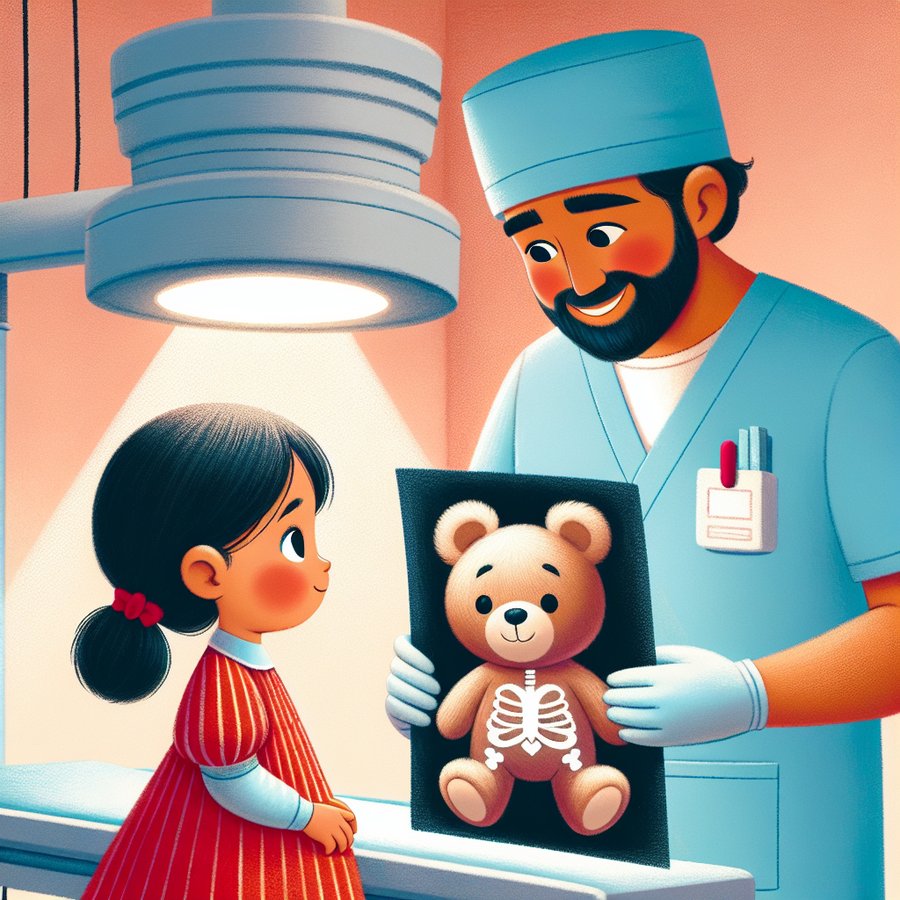X-ray (limited use in pediatrics) plays a crucial role in diagnosing and monitoring various medical conditions in children despite its selective application. This comprehensive guide aims to demystify X-rays for new parents, highlighting their importance, when they are necessary, and the precautions taken to ensure child safety.
What is an X-ray and How Does it Work?
An X-ray is a form of electromagnetic radiation used to create images of the inside of the body. It helps doctors diagnose, monitor, and treat many medical conditions by providing clear images of bones, and, in some cases, soft tissues and organs. X-ray works by passing a small amount of radiation through the body, capturing an image on a digital detector or photographic film.
Despite the common use of X-rays in medical diagnostics, their application in pediatrics is limited due to concerns over radiation exposure. Health professionals meticulously evaluate the necessity of an X-ray, considering alternative imaging methods such as ultrasound or MRI, which do not involve radiation, especially for routine examinations and mild conditions.
When are X-rays Necessary for Children?
X-rays are not routinely used in pediatrics unless absolutely necessary. They are primarily employed for diagnosing fractures, detecting foreign objects, evaluating lung infections like pneumonia, and monitoring the progression of chronic conditions such as scoliosis. Pediatricians and radiologists adhere to the “As Low As Reasonably Achievable” (ALARA) principle, aiming to minimize radiation exposure while achieving the required diagnostic quality.
Moreover, specialized equipment and techniques are utilized to limit the radiation dose. For instance, protective shields may be used to cover sensitive areas, and modern digital X-ray machines are calibrated to use the lowest radiation dose possible to get a clear image.
Safety Measures and Precautions for Pediatric X-rays
The safety of children during X-rays is of paramount concern. Radiologists are trained to use radiation doses that are as low as possible to reduce any potential risk. Moreover, the frequency of X-rays is kept to a minimum, with follow-up scans being performed only when absolutely necessary to monitor a child’s condition.
Parents concerned about the risks associated with X-ray exposure can take solace in knowing that the benefits of accurately diagnosing a condition often outweigh the minimal risks. However, it is always advisable to discuss any concerns with your child’s healthcare provider, who can provide detailed information about the need for an X-ray and the safety measures in place.
For more detailed information on pediatric health concerns and diagnostic methods, consider exploring resources on acid reflux, asthma, or autism which highlight alternative diagnostic and treatment avenues that do not rely on X-rays.
X-ray (limited use in pediatrics): Understanding the Indications and Limitations
The use of X-ray in pediatrics is guided by strict criteria to ensure that it is deployed only when the benefits significantly outweigh the risks. These criteria include acute injuries, monitoring for disease progression, and situations where other diagnostic tests cannot provide the necessary information. Always inquire about the specific reasons for an X-ray and the steps taken to safeguard your child’s health.
It is important for parents to understand that while X-rays are a valuable diagnostic tool, their use in children is approached with caution. Health professionals are always on the lookout for the most non-invasive, safest diagnostic methods first. With ongoing advancements in medical imaging technology, the reliance on X-rays continues to decrease, paving the way for safer and equally effective alternatives.
For further reading on non-invasive diagnostic techniques and child health safety, consider visiting ultrasound screening and vision screening, which provide useful insights into child-friendly diagnostic methods. Additionally, understanding developmental milestones can help parents monitor their child’s growth and development without the immediate need for diagnostic imaging.













